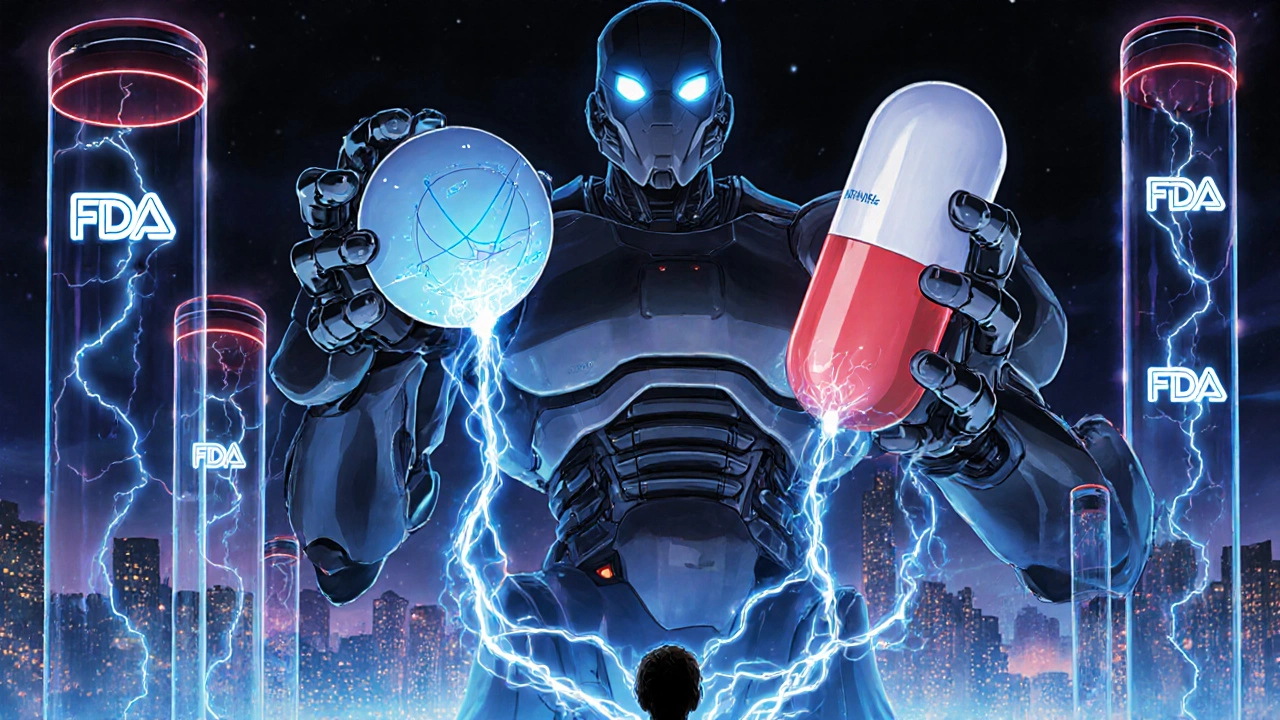
When you pick up a generic pill at the pharmacy, you expect it to work just like the brand-name version. But how does the FDA make sure that’s true? The answer lies in bioequivalence studies - the science behind proving that a generic drug behaves the same way in your body as the original. These aren’t just paperwork exercises. They’re rigorous, expensive, and tightly regulated tests that determine whether a generic drug can safely replace its brand-name counterpart.
Why Bioequivalence Matters
Generic drugs make up 90% of prescriptions filled in the U.S., but they cost only 23% of what brand-name drugs do. That’s a huge savings - but only if they work the same. The FDA doesn’t allow manufacturers to say a generic is equivalent just because it has the same active ingredient. It requires proof that the drug gets into your bloodstream at the same rate and to the same level as the original. That’s bioequivalence.The legal foundation for this came from the 1984 Hatch-Waxman Act. Before that, generic companies had to repeat the full clinical trials that brand-name makers did - a process that took years and cost millions. Hatch-Waxman changed that. It let generics skip most clinical trials if they could prove bioequivalence. That opened the door for affordable medicines, but it also put the burden of proof squarely on the manufacturer.
What the FDA Actually Tests
The FDA doesn’t guess whether a drug works the same. It measures exactly how much of the drug enters your blood and how fast. That’s done through pharmacokinetic studies - usually with 24 to 36 healthy volunteers. Participants take either the generic or the brand-name drug, then have their blood drawn repeatedly over hours to track the drug’s concentration.Two numbers matter most:
- AUC - Area Under the Curve. This measures the total amount of drug absorbed over time.
- Cmax - Maximum Concentration. This shows how high the drug peaks in your blood.
The FDA requires the 90% confidence interval for the ratio of these values (generic vs. brand) to fall between 80% and 125%. This is known as the 80/125 rule. If the generic’s AUC and Cmax are within that range, it’s considered bioequivalent. It’s not about being identical - it’s about being close enough that the therapeutic effect won’t change.
For example, if the brand-name drug reaches a Cmax of 100 ng/mL, the generic must land between 80 and 125 ng/mL. That’s a wide enough range to account for normal biological variation, but tight enough to ensure safety.
When Fasting Isn’t Enough
Most bioequivalence studies start with volunteers fasting. That’s because food can change how a drug is absorbed. But if a drug is meant to be taken with meals - like some statins or antibiotics - the FDA requires a second study under fed conditions. That’s because absorption can be slower, faster, or even blocked by food.Take itraconazole, an antifungal. Taken on an empty stomach, it’s poorly absorbed. But with food, absorption jumps dramatically. A generic version that works fine when fasting might fail under fed conditions. That’s why the FDA sometimes requires both studies. Skipping the fed study is one of the most common reasons ANDA applications get rejected.

Biowaivers: When You Don’t Need a Human Study
Not every drug needs a blood test. The FDA allows biowaivers - exemptions from in vivo studies - for certain products. These are usually drugs where absorption is predictable and unlikely to change.Examples include:
- Oral solutions with the same ingredients and concentration as an approved product
- Topical creams or lotions meant to work on the skin, not in the bloodstream
- Inhalant anesthetics that don’t rely on systemic absorption
The rule for biowaivers is called Q1-Q2-Q3:
- Q1: Same active and inactive ingredients
- Q2: Same dosage form and strength
- Q3: Same pH, solubility, and dissolution profile
If all three match, the FDA accepts that the drug will behave the same - no blood draws needed. This can cut development time by 6 to 12 months and save hundreds of thousands of dollars.
Tighter Rules for Dangerous Drugs
Some drugs have a narrow therapeutic index - meaning the difference between a safe dose and a toxic one is tiny. Warfarin (a blood thinner), levothyroxine (for thyroid), and digoxin (for heart rhythm) fall into this category.For these, the 80/125 rule is too loose. The FDA tightened the acceptance range to 90-111% for Cmax and AUC. That’s a much narrower window. A generic that’s 115% as potent as the brand might be fine for a painkiller, but it could cause dangerous bleeding with warfarin.
Manufacturers of these drugs face extra scrutiny. The FDA often requires multiple bioequivalence studies, sometimes with different populations, to confirm consistency.

Why So Many Applications Get Rejected
In 2022, only 43% of ANDA applications got approved on the first try. That’s low - but it’s not because the science is flawed. It’s because submissions are messy.Common mistakes include:
- Using outdated analytical methods that can’t detect small differences
- Too few participants, making results statistically unreliable
- Not following the product-specific guidance (PSG) for that drug
- Poor documentation of sample handling or storage
The FDA publishes over 2,100 product-specific guidances - one for nearly every approved drug. These detail exactly how to design the study, what endpoints to measure, and even what type of analytical equipment to use. Companies that follow these guidances have a 68% first-cycle approval rate. Those that ignore them? Only 29%.
Complex Drugs Are the New Frontier
Topical creams, inhalers, and injectables are harder to replicate than pills. Their performance depends on how the drug is formulated - not just what’s in it. A generic cream might have the same active ingredient, but if the emulsion is different, the drug won’t penetrate the skin the same way.The FDA is responding with new tools:
- Physiologically Based Pharmacokinetic (PBPK) modeling - computer simulations that predict how a drug behaves based on its chemical properties
- In vitro release testing (IVRT) - measuring how fast the drug comes out of the cream or inhaler
- In vitro permeation testing (IVPT) - testing how well the drug passes through skin or membranes
These methods are becoming standard for complex generics. In 2022, 78% of complete response letters for topical products cited bioequivalence issues. That’s a red flag: if you’re making a cream or inhaler, you can’t just copy the brand. You have to prove it works the same - using modern science.
What’s Next for Bioequivalence
The FDA’s Generic Drug User Fee Amendments (GDUFA III), running through 2027, aims to issue 1,800 more product-specific guidances. It’s also pushing for international alignment - 87% of FDA and EMA (European Medicines Agency) bioequivalence rules now match.There’s growing interest in using real-world data and AI to predict bioequivalence, especially for drugs that are hard to test in humans. But for now, the gold standard remains the same: controlled clinical studies with blood samples, clear statistical thresholds, and strict adherence to FDA guidance.
For manufacturers, the message is clear: don’t cut corners. Don’t assume your formulation is close enough. Don’t skip the product-specific guidance. The FDA doesn’t just want you to meet the 80/125 rule - it wants you to understand why it exists, and how to prove it with precision.
What happens if a generic drug fails bioequivalence testing?
If a generic drug fails bioequivalence testing, the FDA issues a complete response letter. The manufacturer must fix the issue - which could mean redesigning the formulation, running a new study, or providing better data - and resubmit. This can delay approval by months or even years. Many companies abandon the project if the cost of rework is too high.
Are generic drugs always as safe as brand-name drugs?
Yes - if they pass bioequivalence testing. The FDA requires generics to meet the same quality, safety, and effectiveness standards as brand-name drugs. The only difference is the cost. Millions of people use generics safely every day. The FDA monitors adverse events for both brand and generic drugs, and there’s no evidence that generics cause more side effects when they’re bioequivalent.
Can a generic drug be approved without any human studies?
Yes - but only for certain products. Biowaivers are allowed for oral solutions, topical creams for local effect, and some inhalants, if they meet strict Q1-Q2-Q3 criteria. These products have predictable absorption, so human studies aren’t needed. But for most pills and capsules, a clinical study with volunteers is required.
How much does a bioequivalence study cost?
A single bioequivalence study typically costs between $500,000 and $2 million. The price depends on the number of participants, the complexity of the drug, the analytical methods used, and whether both fasting and fed studies are needed. For complex drugs like inhalers or topical products, costs can go even higher due to specialized testing.
Why does the FDA use 80% to 125% instead of 100%?
Because no two drug formulations are exactly the same. Even brand-name drugs vary slightly between batches. The 80-125% range accounts for normal biological variation in how people absorb drugs. If the generic’s absorption is within this range, the difference is considered clinically insignificant - meaning it won’t affect how well the drug works or its safety.

Barry Sanders
November 14, 2025 AT 12:36Dilip Patel
November 14, 2025 AT 16:12kshitij pandey
November 16, 2025 AT 13:00Ashley Durance
November 17, 2025 AT 17:02Kevin Wagner
November 19, 2025 AT 02:38Ryan Anderson
November 19, 2025 AT 11:58Don Ablett
November 19, 2025 AT 21:48gent wood
November 21, 2025 AT 15:53Jane Johnson
November 22, 2025 AT 05:04Peter Aultman
November 23, 2025 AT 13:10Sean Hwang
November 23, 2025 AT 22:03Brittany C
November 24, 2025 AT 03:08Sean Evans
November 25, 2025 AT 05:09Anjan Patel
November 25, 2025 AT 19:36Scarlett Walker
November 27, 2025 AT 11:53Hrudananda Rath
November 28, 2025 AT 05:38Brian Bell
November 29, 2025 AT 09:10Nathan Hsu
November 29, 2025 AT 13:36Chris Ashley
December 1, 2025 AT 08:57Kevin Wagner
December 1, 2025 AT 09:36